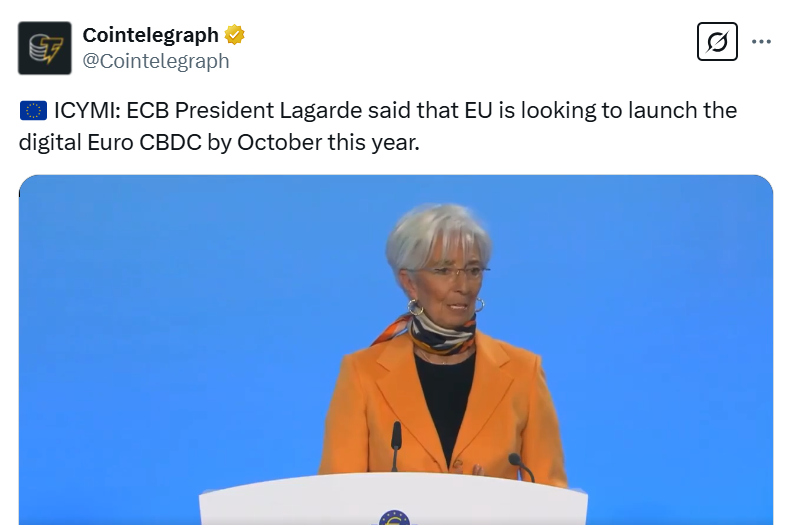CBDCs (central bank digital currencies) are centrally controlled digital fiat issued on permissioned ledgers that can enable programmable controls over spending and savings, raising privacy and surveillance concerns including potential expiry features on personal balances.
-
CBDCs can enable programmable money controls that may limit how and when funds are spent.
-
Transatlantic policy is diverging: the EU advances a digital euro while U.S. lawmakers and executive actions restrict CBDC issuance.
-
Real-world pilots have exposed surveillance mechanics in CBDC code, demonstrating freeze or reduction controls in wallets.
CBDC risks: central control over money, privacy threats and programmable expiration on savings — learn policy impacts and protection steps. Read now.
What are CBDCs and why do they matter?
CBDC is a centrally issued digital version of fiat that runs on a permissioned ledger and is controlled by a central bank. CBDCs matter because they can improve payment efficiency and inclusion, but also enable new controls over spending and privacy that did not exist with cash.
How could programmable money change individual financial freedom?
Programmable money allows conditional rules to be attached to digital balances. Experts warn these rules could include spend limits, merchant restrictions, or time-limited access—effectively creating an “expiry date” on savings. Susie Violet Ward, CEO of Bitcoin Policy UK, described this as the “weaponization of money.”
CBDCs threaten more central bank control over money, including potential expiry dates on personal savings, Bitcoin Policy UK’s CEO said.
Global central bank digital currency (CBDC) efforts are increasing the capacity of monetary authorities to control money supply mechanics and individual accounts. Policy choices in the US and Europe are diverging, with the EU accelerating a digital euro project while US policymakers restrict Federal Reserve-issued CBDCs.
CBDCs are digital representations of fiat issued on permissioned, centrally governed ledgers rather than fully decentralized blockchains. They can offer faster settlement and broader inclusion, but the architecture also permits programmable features unavailable in cash.
“Not all digital currencies are the same,” said Susie Violet Ward, financial analyst and CEO of Bitcoin Policy UK, warning that CBDCs represent the “weaponization of money in its purest form.”
Ward argued that programmable currency could allow authorities to enforce rules directly through money itself, potentially imposing expiry dates on savings or restricting purchases. “They’ll be able to control everything you do through money.”
Referencing dystopian outcomes, Ward added that programmable money raises surveillance risks reminiscent of fictional warnings about centralized control. The remarks were made on a Chain Reaction industry discussion and have been widely cited in policy debates.
Escaping the Death of Privacy with Bitcoin #CHAINREACTION — Cointelegraph (@Cointelegraph) August 21, 2025
Why is Europe pushing a digital euro while the U.S. resists?
Europe views a digital euro as a strategic payment infrastructure upgrade that can coexist with cash and improve cross-border payments. The European Central Bank has signaled a 2025 rollout timeline and is reportedly evaluating major public blockchains as part of design discussions.
In contrast, U.S. actions have moved toward restrictions: the House added a provision to a defense bill banning the Federal Reserve from issuing a CBDC, and prior legislative efforts such as the Anti-CBDC Surveillance State Act passed the House. An executive order signed in January 2025 further limited the establishment or circulation of CBDCs in the U.S.
Supporters of the U.S. stance cite concerns about financial stability, individual privacy, and national sovereignty. Proponents of the EU approach emphasize inclusion and modernized payments while promising privacy protections in policy documents and public statements.

Source: Cointelegraph
Real-world CBDC pilots have already revealed control mechanics. In one 2023 example, published source code showed functions that would allow authorities to freeze or reduce user funds within CBDC wallets—sparking public scrutiny when the code was reviewed.
Advocates stress that well-designed CBDCs can expand access to digital payments and reduce transaction costs. Critics emphasize surveillance risk and the concentration of power if central banks hold direct control over retail balances.
Frequently Asked Questions
Can CBDCs impose expiry dates on personal savings?
Yes, in theory CBDCs can be programmed with expiry or conditional access. Implementation would require explicit policy decisions and technical design choices by central banks and legislators. Evidence from pilot code reviews indicates such controls are technically feasible.
How can individuals protect privacy if CBDCs are adopted?
Individuals can prioritize privacy-preserving payment options, support strong legal safeguards, and favor designs that include offline cashlike features or anonymized transaction tiers. Advocacy and regulatory safeguards are crucial to limit surveillance risks.
Key Takeaways
- CBDCs enable programmable controls: That capability can improve payments but also introduce surveillance and conditional access to funds.
- Policy split between the US and EU: The EU advances a digital euro while U.S. law and executive actions restrict Federal Reserve-issued CBDCs.
- Design matters: Privacy-preserving architecture and robust legal safeguards determine whether CBDCs are inclusion tools or surveillance instruments.
Conclusion
The rise of CBDCs places a spotlight on trade-offs between payment innovation and civil liberties. Policymakers in Europe and the U.S. are taking different approaches, and technical design choices will determine whether digital fiat enhances inclusion or enables new forms of control. Stakeholders should push for transparent, privacy-preserving designs and clear legal protections. For ongoing coverage and policy analysis, follow COINOTAG updates.
Published: 2025-08-22 | Updated: 2025-08-22 | Author: COINOTAG

